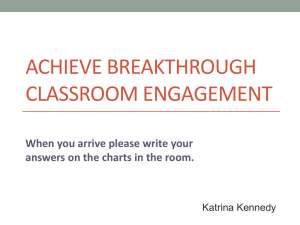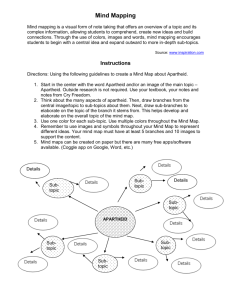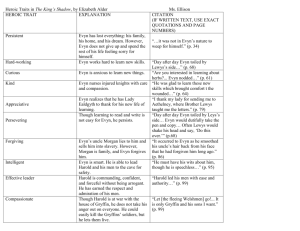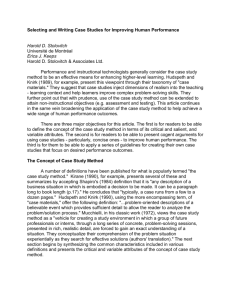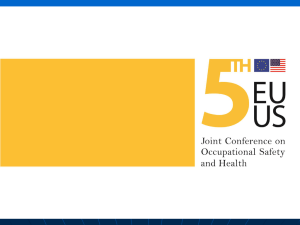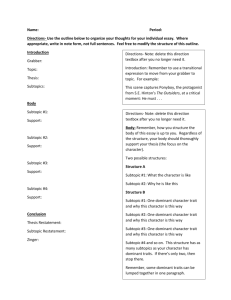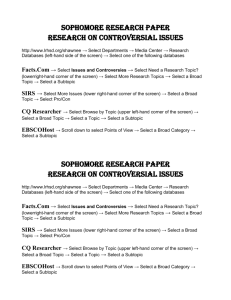Press Conference: Engaging Instructional Design Method
advertisement
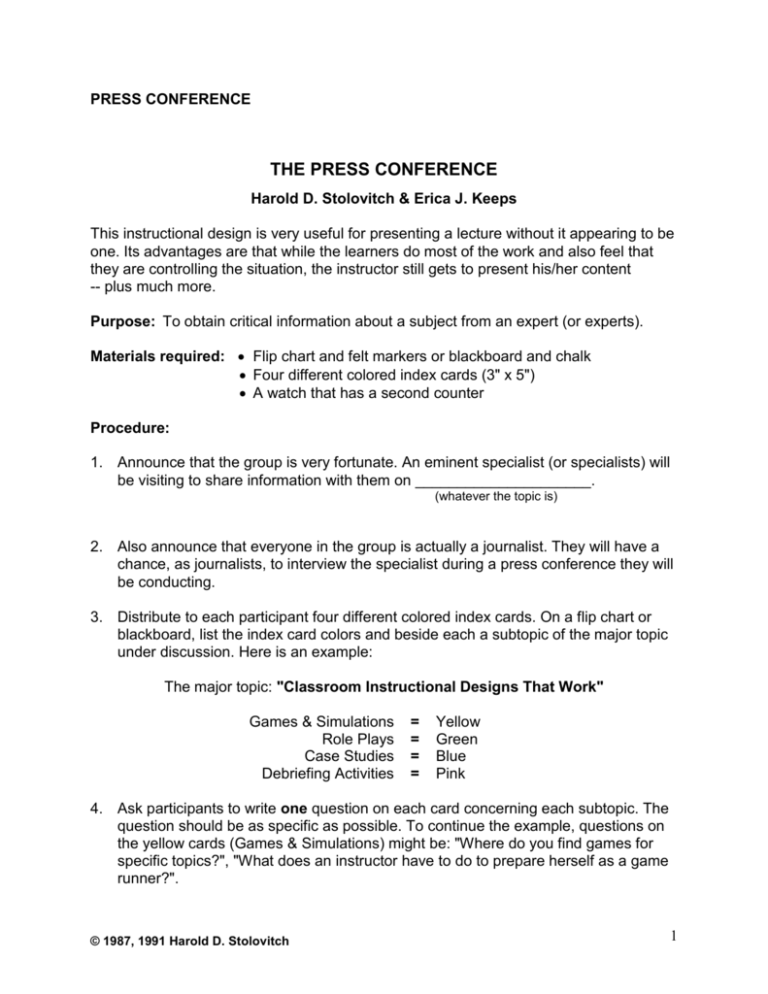
PRESS CONFERENCE THE PRESS CONFERENCE Harold D. Stolovitch & Erica J. Keeps This instructional design is very useful for presenting a lecture without it appearing to be one. Its advantages are that while the learners do most of the work and also feel that they are controlling the situation, the instructor still gets to present his/her content -- plus much more. Purpose: To obtain critical information about a subject from an expert (or experts). Materials required: Flip chart and felt markers or blackboard and chalk Four different colored index cards (3" x 5") A watch that has a second counter Procedure: 1. Announce that the group is very fortunate. An eminent specialist (or specialists) will be visiting to share information with them on _____________________. (whatever the topic is) 2. Also announce that everyone in the group is actually a journalist. They will have a chance, as journalists, to interview the specialist during a press conference they will be conducting. 3. Distribute to each participant four different colored index cards. On a flip chart or blackboard, list the index card colors and beside each a subtopic of the major topic under discussion. Here is an example: The major topic: "Classroom Instructional Designs That Work" Games & Simulations Role Plays Case Studies Debriefing Activities = = = = Yellow Green Blue Pink 4. Ask participants to write one question on each card concerning each subtopic. The question should be as specific as possible. To continue the example, questions on the yellow cards (Games & Simulations) might be: "Where do you find games for specific topics?", "What does an instructor have to do to prepare herself as a game runner?". © 1987, 1991 Harold D. Stolovitch 1 PRESS CONFERENCE 5. Once questions have been written, collect (or have participants who finish early collect) the cards. Keep the colors separate. If the instructor desires s/he may "seed" some of his/her own questions into the decks. 6. Have participants count off from one to four. Divide them into four groups and send them to different parts of the room. 7. Give each group a pack of cards of a single color with the following instructions: a) You have twenty (20) minutes to prepare for the press conference. Organize yourselves. Select spokespersons and secretaries to record information. b) Read through the questions. Organize and edit them, add or delete questions. Synthesize and sequence. Prepare yourselves as you will only have (7) minutes to ask your questions of the expert(s). 8. After twenty (20) minutes, have groups prepare for the press conference. Inform them that they control the show. For seven (7) minutes they can fire their questions at the expert(s), interrupt, re-route, etc. 9. Inform the groups that they should have recorders to take notes because they will be required to present a press release, based on their questions, to the whole group. 10. Select a person to time the seven (7) minutes. Be strict on the timing. 11. Introduce your expert(s) who, of course, may be you, yourself. 12. Begin immediately with your first group of press interrogators. Let the questions guide you, but make sure you include your critical content in your answers. 13. After seven (7) minutes of rapid fire questions and answers, have your timer call "Stop". Move on to the next group and subtopic. Continue as before until all groups have had an opportunity to grill you, press conference style. 14. Once all groups have completed questioning, instruct them each to create a "press release" covering the main points supplied on their subtopic. Give groups twenty (20) minutes to complete their assignments. © 1987, 1991 Harold D. Stolovitch 2 PRESS CONFERENCE 15. Have each group read out its "press release" (approximately 1 page), radio announcer style, to the entire group. 16. Collect and edit these press releases. Redistribute these (cleaned up versions) as notes or meeting minutes. © 1987, 1991 Harold D. Stolovitch 3
